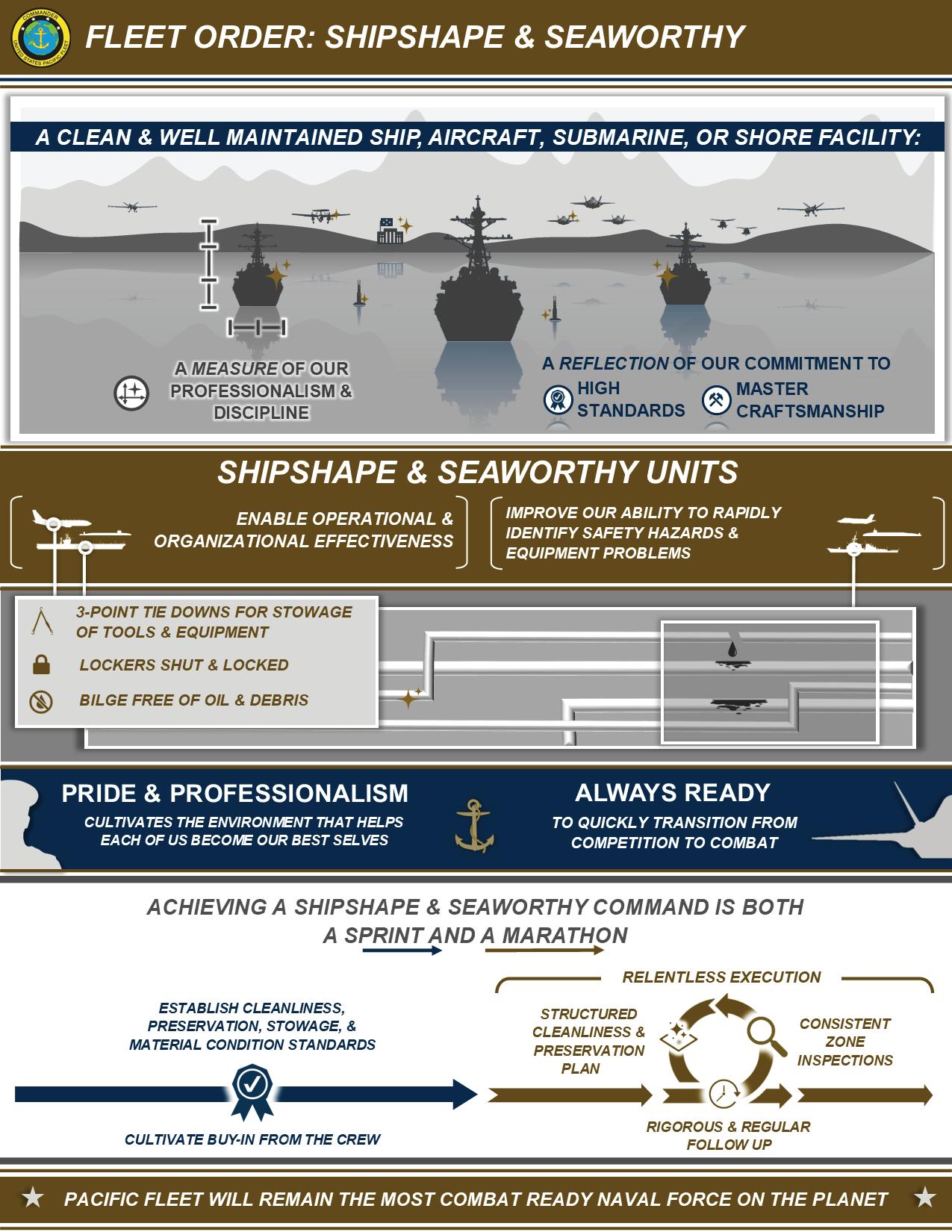Restoring the Wetland






(PDF) Ho’okele Bimonthly Magazine: https://issuu.com/navyregionhawaii

(VIDEO) Ho’okele Monthly Show: https://www.facebook.com/NavyRegionHawaii/videos
Director of Public Affairs, Navy Region Hawaii

Lydia Robertson
Deputy Director of Public Affairs, Navy Region Hawaii
Mike Andrews
Director of Public Affairs, Joint Base Pearl Harbor-Hickam
Chuck Anthony
Director of Public Affairs, Pacific Missile Range Facility
Lisa Ferdinando
Managing Editor Anna Marie General
Video Editor Melvin Gonzalvo
Military Editor MCC Christopher Blachly
Production Team Elaine Phillips
Joanne Tumacder
MC2 Gregory Hall
MC2 Samantha Jetzer
MC2 Bodie Estep
Staff Sgt. Jacob Thompson
Commander, Navy Region Hawaii oversees two installations: Joint Base Pearl Harbor-Hickam on Oahu and Pacific Missile Range Facility, Barking Sands, on Kauai. We provide oversight for the ten surface ships homeported at JBPHH. Navy aircraft squadrons are also co-located at Marine Corps Base Hawaii, Kaneohe, Oahu, and training is sometimes also conducted on other islands, but most Navy assets are located at JBPHH and PMRF. These two installations serve fleet, fighter and family under the direction of Commander, Navy Installations Command.
The guided-missile cruiser and destroyers of Commander, Naval Surface Group Middle Pacific deploy independently or as part of a group for Commander, U.S. Third Fleet and in the Seventh Fleet and Fifth Fleet areas of responsibility. The Navy, including your Navy team in Hawaii, builds partnerships and strengthens interoperability in the Pacific. Each year, Navy ships, submarines and aircraft from Hawaii participate in various training exercises with allies and friends in the Pacific and Indian Oceans to strengthen interoperability. Navy service members and civilians conduct humanitarian assistance and disaster response missions in the South Pacific and in Asia. Working with the U.S. Coast Guard, the Navy in Hawaii provides drug interdiction and fisheries enforcement operations for Commander, U.S. Pacific Fleet. In even-numbered years, Hawaii hosts the biennial summer Rim of the Pacific Exercise, the world’s largest military maritime exercise, featuring more than two dozen nations and 25,000 personnel.
The Navy family in Hawaii comprises around 50,000 people, most of whom are active duty service members and their families, and includes nearly 15,000 civilians and contractors as part of our workforce.
JBPHH includes the Pearl Harbor waterfront, Hickam flight line, Wahiawa annex and several other areas in West Oahu and provides a major logistics and other support hub for the military and military families. Supporting the nation’s ballistic missile defense initiative, the Pacific Missile Range Facility on the western coast of “The Garden Island,” is the world’s largest instrumented multidimensional testing and training missile range.

We provide services to the U.S. Pacific Command, one of DOD’s six geographic combatant commands, with an area of responsibility covering half the globe. We directly support two component commands whose headquarters are on JBPHH: Commander, U.S. Pacific Fleet and Commander, U.S. Pacific Air Force. Close to our own Region/ MIDPAC headquarters command is Commander, Submarine Force, U.S. Pacific Fleet. With 18 forward-deployable combat-ready U.S. Navy submarines, Pearl Harbor is home to the largest submarine presence in the Pacific. The Pearl Harbor Naval Shipyard, on JBPHH, is the largest ship repair facility between the West Coast and the Far East. Within our region, we support more than 100 tenant commands.




AROUND NAVY REGION HAWAII
- Military 911: RDC is who you call
- Month of the Military Child
COVER STORY
- April is Earth Month: Restoring the Wetland
PHOTO HIGHLIGHTS
16
AROUND JOINT BASE PEARL
HARBOR-HICKAM
- JBPHH hosts ‘Info Fair’
- Top bowlers ‘Strike’ to win
- Dining facilities support nutritional goals


AROUND PACIFIC MISSILE RANGE FACILITY
- March is Women’s History Month:This girl is on fire
BACK COVER - Shipshape and Seaworthy

Flashing lights accompany a siren as an emergency vehicle races down the street. Cars pull out of the way as the lights continue to race down the street. Somewhere, someone is having what could be the worst day of their life.
This is an everyday scene, one that most hope to never be a part of, and part of what makes up the job of dispatchers at the Commander, Navy Region Hawaii Regional Dispatch Center (RDC).
On a military installation, emergency services start with a call to Military 911, or the RDC.
“It’s difficult being a dispatcher, because you will get calls that are really hard to deal with,” said Summer Kipu, an emergency response training, quality assurance trainer at the RDC. “You will get calls from people that are having probably the worst day in their life.”
Dispatchers at the RDC work to maintain calmness during a stressful situation. Communicating effectively during a tumultuous time helps the call and ensures that the dispatcher gets the information they need to relay to first responders.
“It’s important to show the empathy on phone calls because when a person is in crisis or in a terrible situation, you’re the only voice that they’re going to listen to for help,” said Denise De Laura, an emergency response training, quality assurance trainer at the RDC. “You want to get all the information, of course, their address and their phone number and exactly what’s the matter, because you want to get help to them as soon as possible.”
De Laura said that it can be difficult to maintain calm, because one could imagine themselves in the caller’s situation. She said it is important to remember that she is the one holding the lifeline, instead of the other way around. By showing empathy, she is able to maintain her calm and help the caller realize that there is help coming.
RDC dispatchers handle emergency phone calls for military installations on Oahu and for Pacific Missile Range Facility on Kauai. When looking for new recruits, the RDC provides training and looks for a particular type of person.



“The qualifications that we look for in a dispatcher is someone who is able to multitask and listen to multiple different things going on at the same time,” said Kipu. “We need someone who is accurate in their typing, is a good communicator and is able to maintain their composure under stressful conditions.”
The RDC provides seven weeks of classroom training that is followed by eight additional weeks of on-the-job training. This training provides them with the basic knowledge to fill their critical position.

Each emergency call presents a unique opportunity and can be stressful for a dispatcher. Working through that call can be difficult, but it can be rewarding.
“One of the aspects I find very rewarding is when a caller thanks you at the end of a call,” said De Laura. “They’re hysterical initially, and they start to realize that you really are trying to help them. They get very grateful, and they say thank you.”
Story and photos by MC2 Greg Hall Navy Region Hawaii Public Affairs


Aslight turn off of Mamala Bay Drive, near the Hickam Harbor marina, a flock of brown and white birds fly toward an empty wetland area near the beach. The flock is here for the winter, and they plan to return home to the Arctic for the summer months. These are not the birds that Joint Base Pearl Harbor-Hickam (JBPHH) natural resource manager, Sarah Howard, is looking for however. She is looking for a bird that is native to Hawaii, but also lives near this area.
The Ahua Reef extends south from the shoreline of JBPHH out into the Pacific. Migratory water shorebirds use the restored wetlands here as a temporary seasonal residence, and the endangered Hawaiian Stilt uses this location as its home.


“This is one of their favorite spots to hang out here,” said Howard. “The Hawaiian Stilt is an endangered Hawaiian waterbird. It loves this, like, muddy kind of wetland area where it’ll forage for insects and crustaceans and things like that. So that’s our primary species that we see here. And it’s kind of the habitat that we maintain is mostly for the Hawaiian stilts.”
The Navy’s natural resource program manages this part of the coast. The team is comprised of professional scientists who have knowledge of the local ecosystems here in Hawaii. They work to ensure the military complies with the federal laws that protect these resources.
“Another reason that we manage this area is to meet Sikes Act requirements,” Howard said. According to the U.S. Fish and Wildlife Service, the Sikes Act calls for the cooperation between Department of Defense (DoD) and the Department of Interior to carry out a program for the conservation and rehabilitation of natural resources on military installations. “Each DoD installation has to maintain and conserve its natural resources as best as it can while maintaining the mission.”
The work required to maintain an area like the Ahua Reef Wetland is quite a lot and at times filled with challenges. Invasive plants, like mangrove and pickle weed, grow rapidly and can cover an area if there is not regular upkeep. Another challenge to the area is the constant loss of sand and shoreline due to coastal erosion. This is also something that the Navy natural resource team manages by having volunteers come in to plant native plant species along the coast.
Howard said, “Not only does it provide wetland habitat for the birds, but it’s also erosion control. With extreme tides like king tides, erosion control is a major concern. So the native plants offer great erosion control and shoreline stabilization.”
In April, service members and base employees will participate in Earth Day volunteer events. One of these opportunities will be to help with cleaning and restoration projects here at the Ahua Reef Wetland on Friday, April 21. Volunteers 12 years old and up, are encouraged to participate. If you have any questions, send an e-mail to wildlife@hawaii.edu.









Rear Adm. Stephen Barnett, commander, Navy Region Hawaii, greets individuals after speaking to an engineering class at the University of Hawaii at Manoa, March 3. The guest speakers were invited to speak about their background in engineering and its importance in their daily work. (Photo by MC2 Greg Hall) 1
Team Hickam personnel attend a Women’s History Month discussion panel at the Hickam Theater on Joint Base Pearl Harbor-Hickam, March 17. (Photo by Sgt. Alan Ricker) 2

U.S. service members and veterans attend a ceremony for the 50th anniversary of Operation Homecoming, hosted by the Defense POW MIA Accounting Agency, at Joint Base Pearl Harbor-Hickam, March 28. (Photo by Staff Sgt. David Owsianka) 3

4




The Arleigh Burke-class guided-missile destroyer USS Chung-Hoon (DDG 93) steams in the South China Sea while conducting operations with the Arleigh Burke-class guidedmissile destroyer USS Milius (DDG 69) and the Japan Maritime Self-Defense Force Murasame-class destroyer JS Kirisame (DD 104), March 25., March 25. (Photo by MC1 Greg Johnson)
Col. Keith A. Young, 15th Wing vice commander and F-22 Raptor pilot, drives down the taxiway at the Pacific Missile Range Facility, Barking Sands, March 9. (Photo by MC2 Bodie Estep) 5

1st Lt. Cassidy Mullen of the 535 AS/SQD talks with Aliamanu Middle School STEM students about the C-17 Globemaster III, its mission and capabilities, while sharing what it’s like to be a pilot in the U.S. Air Force, March 6 . (Photo by Joanne Tumacder) 6

Service members and civilians volunteered their time to pick up trash at Joint Base Pearl Harbor-Hickam as part of the quarterly “Love JBPHH cleanup campaign, March 24. (Photo by Joanne Tumacder) 7

A Red Hill Bulk Fuel Storage Facility (RHBFSF) contractor trims a support beam during repairs at Halawa, March 15. (Photo by Petty Officer 3rd Class James Finney) 8
9



Runners participate in a foam run at the Missing Man Trail in honor of Women’s History Month on Joint Base Pearl Harbor-Hickam, March 22. The foam run was hosted by the 65th Airlift Squadron and was open to all military and civilian personnel with base access. (Photo by Staff Sgt. Alan Ricker)

Musician 2nd Class Jaclyn Skeweris leads the U.S. Pacific Fleet Band down the streets of Waikiki during the annual Honolulu Festival Parade, March 12. (Photo by MU2 Chandler Davis) 10


Joint Base Pearl Harbor-Hickam (JBPHH) hosted an information fair at Bloch Arena, April 5. More than 30 organizations participated and approximately 200 people attended the event.

It was designed to be a “one-stop-shop” to provide event goers updated information on Red Hill, as well as roles, missions, and other services provided at JBPHH.
The information fair provided Red Hill topics that included remediation, health services, and water testing. The same information was also shared on websites, social media and provided to those who attended the U.S. Environmental Protection Agency (EPA) Open House in January.
Joint Base Commander, Capt. Mark Sohaney, conducted a Facebook livestream with Dr. Bill Rice, a board-certified occupational and environmental medicine physician with the Defense Health Agency. They discussed medical issues related to Red Hill and provided an update on clinic operations.
“The clinic opened up on Jan. 3, and since that time, we’ve seen about 80 patients,” Rice said. “Largely, their concerns have been gastrointestinal complaints in nature, headaches, and skin irritation.”
Rice said it’s normal to expect patients with physical concerns to come to the clinic, but others have presented with mental health concerns as well.
“It is certainly understandable that patients would experience anxiety and other related mental health issues,” Rice added.
The Agency for Toxic Substance and Disease Registry (ATSDR) visited the installation recently. Capt. Sohaney discussed the purpose of that visit with Rice.
“After exposure happened, the science would tell us that we would expect symptoms to subsume,” Rice said. “But our data showed that we are still seeing patients attributing their symptoms to water exposure. So we asked this agency to come and look at our medical records, and they are going to release their findings on their website early next year.”
Capt. Sohaney also interviewed Capt. James Sullivan, Red Hill Environmental Officer in Charge, Naval Facilities Engineering Systems Command Hawaii, regarding the Navy’s Drinking Water Long-Term Monitoring program.
“The long-term monitoring is a two-year program that started last March after the Hawaii Department of Health (DOH) lifted the health advisory, declaring the water was safe to drink,” Sullivan said. “Every period, we’re testing every medical facility, school, child development center, as well as 10% of all the houses on the JBPHH drinking water distribution system for more than 60 contaminates listed in the Drinking Water Long-Term Monitoring Plan that was approved by the EPA and DOH last year.”
According to Sullivan, 4,800 tests have been completed so far and 3,000 more will be completed by the end of the program for a total of 7,800. All of the testing results are on the JBPHH Safe Waters website – jbphh-safewaters.org.
“If anyone has any questions about if your house has been tested, that information is available on our JBPHH Safe Waters website. We’ve got an interactive map, where you can find your house, and blue dots show all the tests conducted,” Sullivan explained. “You can toggle it to find your address, your neighbor’s address, anywhere you’re interested in, and all the results are posted on there as well. We are always available to answer any questions related to results.”
Eventgoers were invited to ask questions related to Red Hill, and subject matter experts were present to answer questions related to long-term monitoring and to talk through the Red Hill defueling plans. Among the organizations, were the Hawaii Department of Transportation Services and the JBPHH Emergency Management Department, who provided attendees with information on public transit and hurricane preparedness.
Yeoman Third Class Jada Glaspie attended the event and works in the Administrative department for JBPHH that serves as a focal source of information for active duty service members. She hopes to benefit others with the newly found knowledge she gained at the event.
“The main part for me is spreading this information to everybody else because we get a lot of people asking us, ‘how do we do this?’ and ’how do we do that?’ and needing information,” said Glaspie. “We have to find out this information, and it’s not always readily available to the service member, all in one.”
The base experiences a high turnover rate every year due to service members, and their families moving.
“We have a large civilian employee population and we have a lot of military retirees. Some of these new families may not know about Red Hill and they don’t know about all the services available to them,” said Capt. Sohaney. “This is just one way to get the word out to our base community.”
Joint Base Pearl Harbor-Hickam delivers the best service in base operating support to tenant commands to enable operational mission success while simultaneously providing the highest quality of installation services, facilities support and quality of life programs.
For more information on services available at the base, visit the JBPHH website at https://cnrh.cnic.navy.mil/Installations/JB-PearlHarbor-Hickam/ and on Facebook at http://www.facebook.com/ JBPHH.
More information on Red Hill is available at https://cnrh.cnic. navy.mil/Operations-and-Management/Red-Hill/.
Story by Joanne Tumacder, Joint Base Pearl Harbor-Hickam Public Affairs (Photo courtesy of Red Hill Joint Task Force)Navy and Air Force bowlers competed in the annual Hawaii All-Military bowling tournament along with other service members and veterans at military bowling centers throughout the island from April 4-7.


The four-day tournament kicked off with the Open Doubles (female and male division) at the Pier Side Bowling Center on Joint Base Pearl Harbor-Hickam (JBPHH), followed by the Mixed and Odd Doubles at Kaneohe Bay Bowling Center, continuing on to the Singles event at Schofield Bowling Center, and concluding with the championship event at Hickam Bowling Center.
“This is our 24th year in running,” said Millie Gomes, bowling manager for JBPHH Morale, Welfare and Recreation bowling centers. “The tournament consisted of all branches of service and a team of retired service members who had gone through preliminary tryouts to qualify for the top six and the top two females to make up a team.”
Among the Navy team was Chief Information Technology Specialist Devin Tedrow, assigned to Commander, Submarine Force, U.S. Pacific Fleet who shared his experience and love for bowling.
“This is my second time on the Navy team and I wanted to bowl one last time before leaving in October,” said Tedrow. “I bowled throughout highschool, and I did a league on and off after that of my Navy career. It’s really awesome to get back into it because I really love bowling.”
“It’s just a really cool opportunity for bowlers to come together from all the services because not a lot of areas do this tournament,” Tedrow added.
Senior Airman Jared Mallon, assigned to the 154 MXS (Maintenance Squadron), who serves as the bowling team captain of the Air Force, also shared the importance of camaraderie between service members and the bowlers.
“I think this is a good collaboration between multiple branches of the military, combined with the retirees,” said Mallon. “This is a good morale booster, and the winner can have bragging rights of who is the better team.”
With the camaraderie of each military branch, not only did this build the morale, it brought each team together outside of work, ending the week with a game of fun competition.
The retirees team took home the trophy winning this year’s Hawaii All-Military Bowling Tournament championship.

Among the winners were Vincent Davis, Darryl Debebar, Sue Stephens, John Hata, Randy O’Neal, Mebelin Saylor, David Scott, and Mike Heffner.
For more information, visit the JBPHH Morale, Welfare and Recreation’s (MWR) GreatLife Hawaii website at https://jbphh.greatlifehawaii.com/
Story by Anna Marie General, Navy Region Hawaii Public Affairs (Photos by Melvin Gonzalvo and Brittney Wilson)“I think this is a good collaboration between multiple branches of the military, combined with the retirees.”
- Senior Airman Jared Mallon, 154th Maintenance Squadron
Healthy food options play a significant role in an individual’s nutrition. Consuming a balanced diet with a variety of healthy food options can lead to healthier lifestyles and have a significant impact on quality of life.
In recent years, the military has placed a heightened importance on the health of service members by providing different tools, such as access to registered dietitians, improvements to physical fitness testing, and even through nutrition education programs. But the most palpable change to daily nutrition has been made in the military dining facilities.
At Joint Base Pearl Harbor-Hickam, service members and base patrons have a variety of dining options, to include two dining halls: the Hale Aina Dining Facility, located on the Hickam side of base; and the Silver Dolphin Bistro on the Pearl Harbor Side of base. Although they are geographically separated, these facilities share a common interest: providing service members with options to meet their nutritional goals.

Both the Hale Aina and Silver Dolphin have in-place the Go for Green program, a militarywide initiative to encourage better food and beverage selections with the aim to optimize performance, readiness, and health. Go for Green utilizes a food labeling system that helps service members identify healthier food choices in the dining facilities.

“The Go for Green program helps promote healthier dietary habits, similar to the nutrition
labels you see on all food products,” said Senior Chief Petty Officer Everardo Gonzalez, Silver Dolphin Bistro commissaryman. “Go for Green follows the traffic light method: foods labeled green are good to go and encouraged to eat more of; yellow should be consumed sparingly, and red should not be eaten as often.”
Foods are given a certain color based on things such as sodium, fat content, sugars, nutrients and processed. The program shows customers what they’re eating and it provides options for how they can better meet their nutritional or dietary goals.
“The Go for Green cards we place in our dining facility allows our patrons to get an idea of what they’re eating, and if they’re trying to meal plan and work with their diet or attain certain goals then they can see firsthand what they should or shouldn’t be eating,” said Airman Echo Dickens-Drees, 647th Force Support Squadron services.
Programs like Go for Green help provide service members with the information they need to make healthier choices, but this isn’t the only delivery method for good nutritional information.
By using their training and personal experiences, Airmen and Sailors who work at the dining facilities can engage patrons in conversation to gain a better understanding of what their
nutrition is important.
“Something we try to do while working on the grill is talk with our customers about their nutritional goals,” said Airman 1st Class Richard Garcia, 647th FSS services. “We can help give them insight on nutritional recommendations, as well as recommending a good split of food entrees and portions.”
Airman 1st Class Dennis Davis, 647th FSS services added, “It’s also important to be motivated to be healthy to look good for yourself, as well as share your insight with others. By having good nutrition, you can help give others that knowledge so that they can work on themselves and reach their goals.”
While the military provides nutritional options and tools for service members, reaching nutritional goals ultimately falls upon the individual.
“I would encourage others to look more in depth into nutrition,” said Garcia. “Longevity is key; we not only want to live a long time but we want to live the best we can. How we take care of our bodies can help influence our livelihood and how we feel each day. If you want to live a positive, more healthy life, try going for green.”
Story and photos by Staff Sgt. Jacob Thompson Joint Base Pearl Harbor-Hickam Public Affairs“The Go for Green cards we place in our dining facility allows our patrons to get an idea of what they’re eating, and if they’re trying to meal plan and work with their diet or attain certain goals then they can see firsthand what they should or shouldn’t be eating.”
- Airman Echo Dickens-Drees, 647th FSS
Kimata ran track in highschool and eventually became a sponsored competitive runner. Although her track coach, who was also the fire captain, had told her she would make a great firefighter, she never thought about it much because she didn’t know enough about the job to really be interested in it.
However, after the tragedy of Hurricane Iniki in 1992, which destroyed her home and devastated the entire island, Kimata decided to start studying firefighting. She did this simply by buying books on the subject and reading during her free time. She then quickly realized that being a firefighter would be something she would love.
“I used to think, ‘that’s so boring,’” Kimata said, explaining that if she had known how exciting it would be, she may have started studying it straight out of high school.
When Kimata was called to do an interview with Barking Sands Fire and Emergency Services at Pacific Missile Range Facility (PMRF) 22 years ago, she was unaware that she also had to complete an agility course before she could be hired. She showed up in her comfortable clothes and shoes as instructed and had no idea what to expect. Having to do this just six months after giving birth to her first child, she was thankful for growing up running competitively and for continuing to run throughout her entire pregnancy. In the group of 20 who were completing the course, she was the only female.
“I had a man in that group who told me he was 50 years old at the time,” Kimata said. “So I thought, if he can do it, I can.”
Completing the initial agility test, however, was not Kimata’s only challenge. She said there was a period of time when she had to deal with management that did not want females in the fire service and with peers and subordinates who gave her no respect simply because she was a female.
“I didn’t want to give up,” Kimata said, “because in the back of my mind I’m thinking that I don’t want young girls to think I just took the easy way out, that I just quit and let them win. So I felt that I always had to prove that I could be an assistant chief, manage my guys, and do the job.”
Although Kimata has faced challenges working in the fire service, her career has held many more positives than negatives. One aspect of the job that she was not expecting was the community outreach. Having the opportunity to speak at schools turned out to be one of her favorite parts of being a firefighter.
“I spend a lot of time going to schools, teaching classes and career days to try to get more females,” Kimata said. “It’s not for [the captain], it’s not for our department. I go because I love our career and I want the kids to know that females can do it too.”
Kimata has spent her entire career with PMRF. She recalls sending her resume in on the final day they were accepting applications and notes that they took a chance on her and gave her the opportunity to prove herself. Her dedication to the job led to her becoming the first female Chief Officer for the Barking Sands Fire Department and the second ever in Hawai`i.

Although at this point the state and the county have reached out to her hoping to persuade her to join them, Kimata remains dedicated to PMRF. Having a work environment full of supportive co-workers and opportunities for growth helped show her that she was capable of almost anything.
“I used to always think because I’m female, I can’t do certain things,” Kimata said, “but it made me realize, I’m not going to use the words ‘I can’t’ anymore, I’m just going to say ‘I can try.’”
Being a firefighter is an exciting career full of surprises and opportunities. It is impossible to know what any day has in store, but Kimata has loved every day since making the decision to apply at PMRF. Being the only female in an all male environment has not stopped her from developing lasting relationships and unforgettable memories.
“Finally [my grandma] said ‘ok you be safe’ and I said ‘Yeah I’m actually really enjoying it.’”...“because in the back of my mind I’m thinking that I don’t want young girls to think I just took the easy way out, that I just quit and let them win. So I felt that I always had to prove that I could be an assistant chief, manage my guys, and do the job.”
Although Kimata has faced challenges working in the fire service, her career has held many more positives than negatives. One aspect of the job that she was not expecting was the community outreach. Having the opportunity to speak at schools turned out to be one of her favorite parts of being a firefighter.
“I spend a lot of time going to schools, teaching classes and career days to try to get more females,” Kimata said. “It’s not for [the captain], it’s not for our department. I go because I love our career and I want the kids to know that females can do it too.”
“I’m going to be a firefighter, grandma!” Janice Kimata, Assistant Chief of Prevention for Barking Sands Fire and Emergency Services, recounts the day she told her grandmother the news of her new job. “She said ‘no you cannot be a firefighter!’ so I said, ‘No, I’m telling you, I’m going to be a firefighter.’”
Kimata has spent her entire career with PMRF. She recalls sending her resume in on the final day they were accepting applications and notes that they took a chance on her and gave her the opportunity to prove herself. Her dedication to the job led to her becoming the first female chief officer for the Barking Sands Fire department and the second ever in Hawaii. Although at this point the state and the county have reached out to her hoping to persuade her to join them, Kimata remains dedicated to PMRF. Having a work environment full of supportive coworkers and opportunities for growth helped show her that she was capable of almost anything.

“I used to always think because I’m female, I can’t do certain things,” Kimata said. “But it made me realize, I’m not going to use the words ‘I can’t’ anymore, I’m just going to say ‘I can try.’”
Being a firefighter is an exciting career full of surprises and opportunities. It is impossible to know what any day has in store, but Kimata has loved every day since making the decision to apply at PMRF. Being the only female in an all male environment has not stopped her from developing lasting relationships and unforgettable memories.
“Finally [my grandma] said ‘ok you be safe’ and I said ‘Yeah I’m actually really enjoying it.’”
